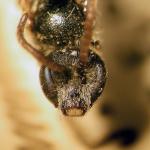This bee is thought to be long extinct in Britain, being known only from Barham and Nacton, East Suffolk, over 200 years ago.
Abroad, it is known widely but scarcely through central and southern Europe, and western Asia.
Listed in the Appendix (not recorded since 1900) of both Shirt (1987) and Falk (1991).
It is thought that the British habitats were sandy, heathy situations.
A British flight period cannot be given but abroad females are reported from April until early August and males from August to September.
The nesting biology has apparently not been documented, either in Britain or abroad.
In addition to the above listed pollen sources, the bees have been found abroad on hoary cress, goat’s-beard, Cambridge milk-parsley and a hawkweed.
No data available.
2016


